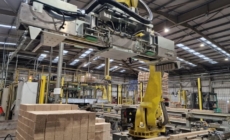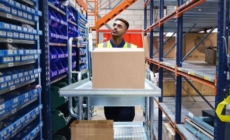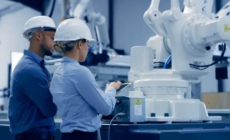-
Tower Launches Customer Sustainability Hub with Practical Tools for Lower-Impact Pharmaceutical Cold Chain - October 16, 2024
-
Six decision-making models for best practice WMS digital transformation - October 16, 2024
-
“Transforming Logistics: Precision and Purpose” – BIFA takes centre stage - October 15, 2024
-
JAMES JONES & SONS LTD EXPANDS ITS PALLETS & PACKAGING DIVISION THROUGH THE ACQUISITION OF HG TIMBER LTD - October 10, 2024
-
HUGO BECK EXPANDS MACHINE RANGE FOR E-COMMERCE, MAIL ORDER AND LOGISTICS - October 10, 2024
-
Winning Irish Exporter of the Year, Combilifts CEO Martin McVicar talks about the journey into the Global Market - October 8, 2024
-
JAMES JONES & SONS’ AUSTRALIAN SUBSIDIARY, HYNE GROUP, EXPANDS TO WESTERN AUSTRALIA - October 3, 2024
-
QUECLINK LAUNCHES SOLAR-POWERED ASSET TRACKER FOR TRAILERS AND CONTAINERS - October 3, 2024
-
Southgate Global Calls for Greater Health and Safety in the Warehouse Back Care Awareness Week - October 3, 2024
-
Nulogy to Expand Capabilities with Strategic Acquisition of Mingo Smart Factory - October 3, 2024
Augmented reality, the future of retail.
In-store customer experience has always followed the same formula. Customers enter the premises, browse through items, sometimes try them, and purchase those they liked. If a sales assistant is available and answers questions with a smile, the customer will enjoy the experience. But, there are a number of issues with this set up: an item or a size may be unavailable or hidden at the bottom of a pile. And sales assistants struggle to attend to all customers. They spend their days carefully folding items ensuring they still tempt the next customer. Attracting fewer and fewer customers, retail is losing ground and is in danger of going underground altogether.
Augmented reality promises to revolutionise in-store customer experience, thereby presenting retailers with a unique opportunity to save their physical stores. In 2016, $ 6.1 billion were spent on augmented reality technologies. Investment is expected to double over the course of 2017, reaching $ 13.9 billion. Average projected year-on-year growth between 2015 and 2020 is set even higher, at 190%. Current trends suggest augmented reality is going to be a huge success; users want new experiences, and there are many in-store!
Augmented reality: a unique opportunity
Augmented reality will add a dimension to the in-store experience: customers’ individual situations will be taken into account, and tailored offers will be designed to meet their specific needs. Customers are encouraged to take pictures of themselves, describe their personal situation, their expectations, and everything flows effortlessly from there.
Augmented reality redefines commercial basics:
Customer path: step-by-step customer assistance throughout their visit; original, personalised and value-enhancing ways of promoting items. Customers see a virtual sales advisor on their mobile phones and follow him through the aisles;
Item information: more personalisation, from more general to more detailed information; recommendations in all areas;
Trying items: a simulation helps the customer get a feel for how he could use the product he wants to buy (try a dress at a party, a swimming costume on the beach, an electric drill on some wood,…). The customer sees himself using the item and gets to compare different options on his screen in order to help him make the selection;
Suggestions and advice: a wide range of useful tips can be shared, including new products, complementary items (to perfect a party look, for example), special deals, available colours or variations…
The latest developments in innovation confirm augmented reality is here to stay. The technological components (sensors, gps, beacon…) and software components (artificial intelligence, facial recognition…) already exist; they just require assembling. All these services will be rendered through smartphones and will grow to include virtual changing rooms, large – usually tactile – screens, and sometimes virtual reality headsets. Sales assistants will retain their functions, guiding customers to make informed choices, as they did before.
Given the speed at which technology is developing and consumer thirst for new experiences, augmented reality is set to develop at lightning speed. It is, without a doubt, the future of retail, and will inspire brands to find novel ways of attracting, conquering and retaining customers.
E-Commerce should aim to promote this new in-store purchasing experience; both sales channels will complement and reinforce each other.
Marc Schillaci, CEO of Actinic, www.actinic.co.uk































